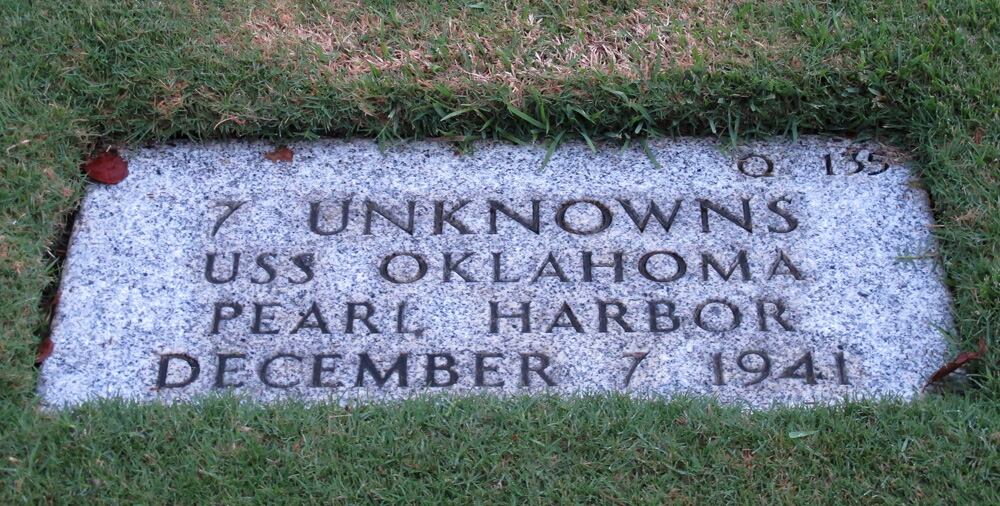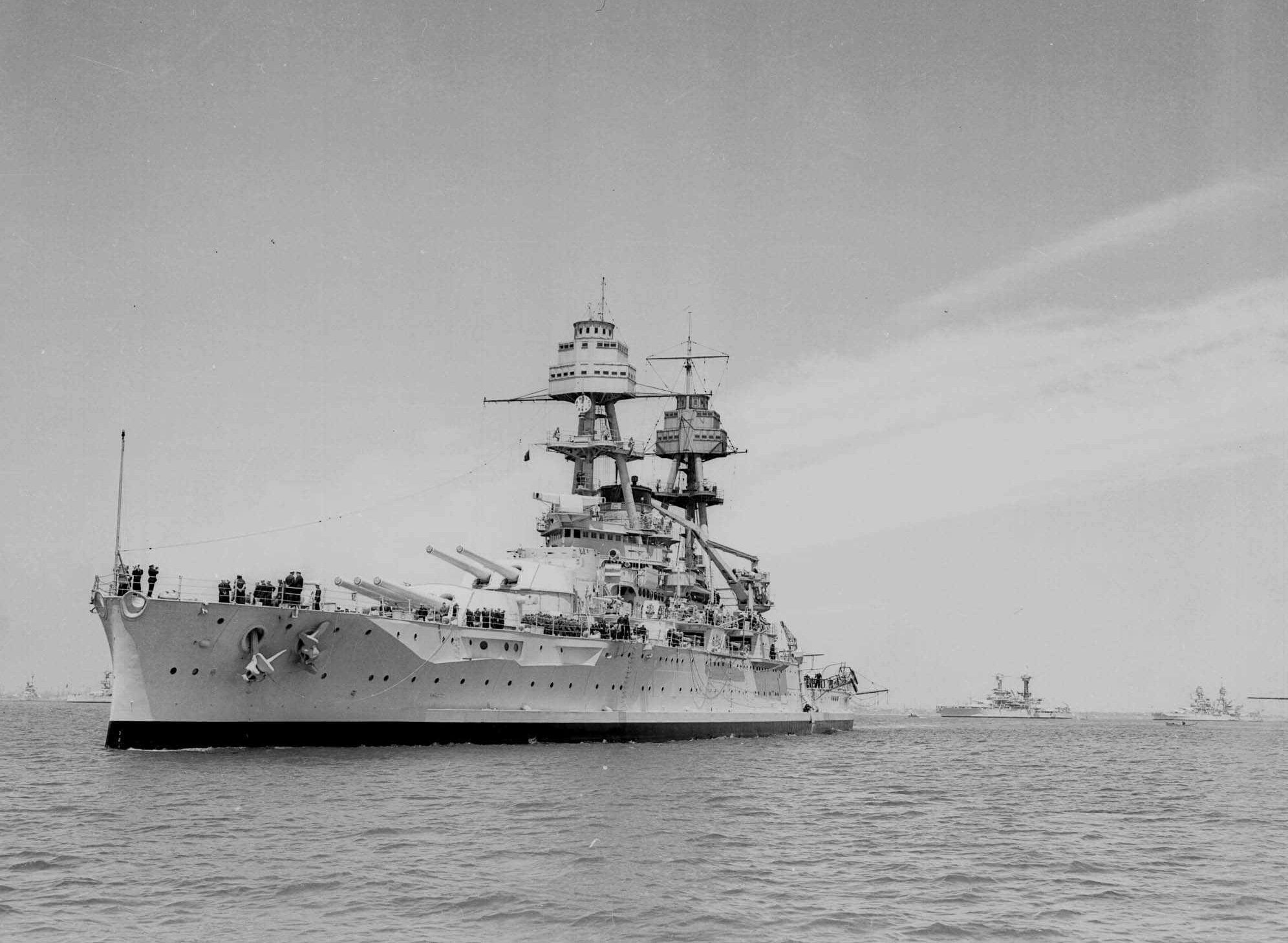Remains of service members killed aboard the battleship Oklahoma at Pearl Harbor, Hawaii on Dec. 7, 1941, will be exhumed from their graves analysis in an attempt to identify the remains and if possible return them to families for burial.
The decision was announced April 14 after over a decade of study and preliminary work by the Defense Department, which led of Defense leading to the decision that identification of sailors and Marines was feasible and a likely outcome if the bodies were disinterred and analyzed.
Currently, 388 of the Oklahoma's crew remain officially unaccounted for after the surprise Japanese attack on Dec. 7, 1941, shocking strike that drew the United States into World War II.
According to a memo signed by Deputy Secretary of Defense Robert Work on also April 14, the remains are commingled and currently rest "in 61 caskets at 45 grave sites" at the National Memorial Cemetery of the Pacific, located in what's known as the "Punch Bowl," an extinct volcano that overlooks Honolulu and Pearl Harbor.
"Analysis of all available evidence indicates that most of Oklahoma crew members could be identified individually if the caskets associated with the ship are disinterred," Work said in the memo.
"I thereby direct DoD to coordinate with the Department of Veteran Affairs for the disinterment and individual identification, to the extent practical, of all unknowns associated with Oklahoma within the next five years."
The Oklahoma decision could paves the way for more such disinterments, beyond Hawaii, as the military moves to identify the thousands of unidentified remains using new analytic tools.
The memo establishes that at locations where commingled remains are buried under a "broader disinterment policy that applies to all unidentified man remains from the NMCP and other permanent U.S. military cemeteries," Work said in the memo.
When remains are commingled, as with those from the Oklahoma, the new policy requires that initial research must indicate a 60 percent chance that individuals can be individually identified before moving forward with exhuming the bodies. When In the case of where individual service members are buried as unknowns, the likelihood of identification must be at least 50 percent.
The new policy doesn't apply to those who are considered lost at sea, nor does it apply to those who are currently entombed in "U.S. Navy Vessels that currently serve as national memorials." Two such vessels are at Pearl Harbor, the battleships Arizona and being the most famous as well as the battleship Utah.
But if unknown service members from a those memorial ships have been buried in national cemeteries, they could be exhumed under the new policy.
In the case of the Oklahoma remains, DoD has contacted families of the missing and has already collected DNA from 84 percent of them. In addition, 90 percent of the medical and dental records of those missing have been collected, too.
But Work also said that some are bound to be disappointed, too.
"I make this decision knowing that not all families willthal receive an individual identification as a result of these efforts,' Work wrote. " But I accept, as a matter of principle, that DoD must strive to provide resolution through individual identification to as many families as possible and to the reasonable limits of our scientific abilities."
The Oklahoma losses were high because the dreadnought capsized within 12 minutes of the attack after it was hit by a total of five torpedoes then rolled over on its port side.before rolling over on her port side.
As a result, Many sailors were trapped inside. Though Eventually 32 of those were eventually rescued by shipyard workers and sailors who cutting holes in the hullship to free them. But many more perished inside from as a result of the explosions and flooding.
Work to salvage the Oklahoma remains didn't begin until mid-1942 and remains continued to be discovered after during the operations which continued the ship had been righted, re-floated and eventually dry-docked in late 1943.
Throughout the salvage and even after while the ship was in drydockadic remains were located and removed from the ship.
Most were initially buried as unknowns, in in Hawaii.
In an attempt to identify some of the sailors happened in 1947, all remains in those cemeteries were disinterred. During this process, attempts to identify 27 unknowns based on dental records failed. By 1950, all unidentified remains associated with the ship were re-interred as unknowns in the Punch Bowl.
The latest efforts started in 2003, when the DoD forensic laboratory in Hawaii, disinterred one casket of Oklahoma remains based on historical evidence provided by former sailor Ray Emory, who survived the attack.
These efforts did identifiedy five servicemen, though 100 men whose remains were also in the casket have yet to be identified.
Any service members who are identified in this latest effort will be returned to their families for burial with full military honors.

This Dec. 5, 2012, photo at the National Memorial Cemetery of the Pacific in Honolulu shows a gravestone identifying it as the resting place of seven unknowns from the USS Oklahoma who died in the Japanese bombing of Pearl Harbor.
Photo Credit: Audrey McAvoy/AP
Mark D. Faram is a former reporter for Navy Times. He was a senior writer covering personnel, cultural and historical issues. A nine-year active duty Navy veteran, Faram served from 1978 to 1987 as a Navy Diver and photographer.





